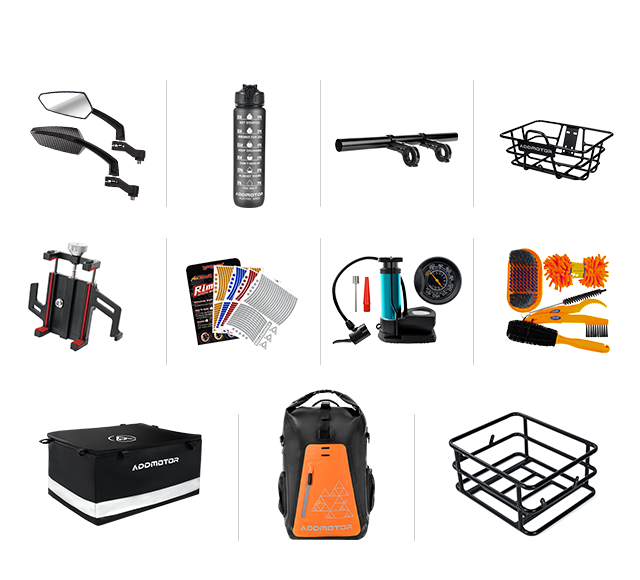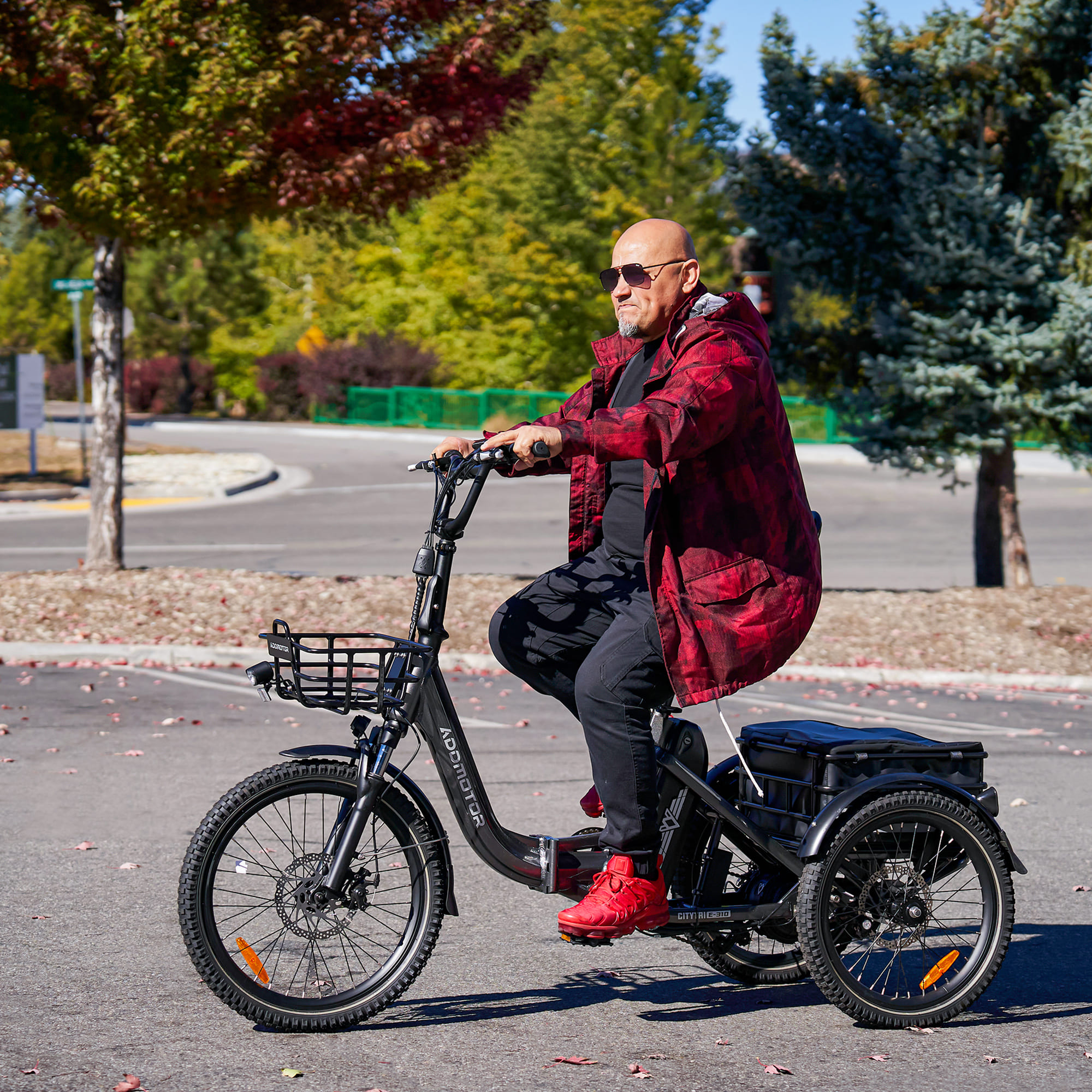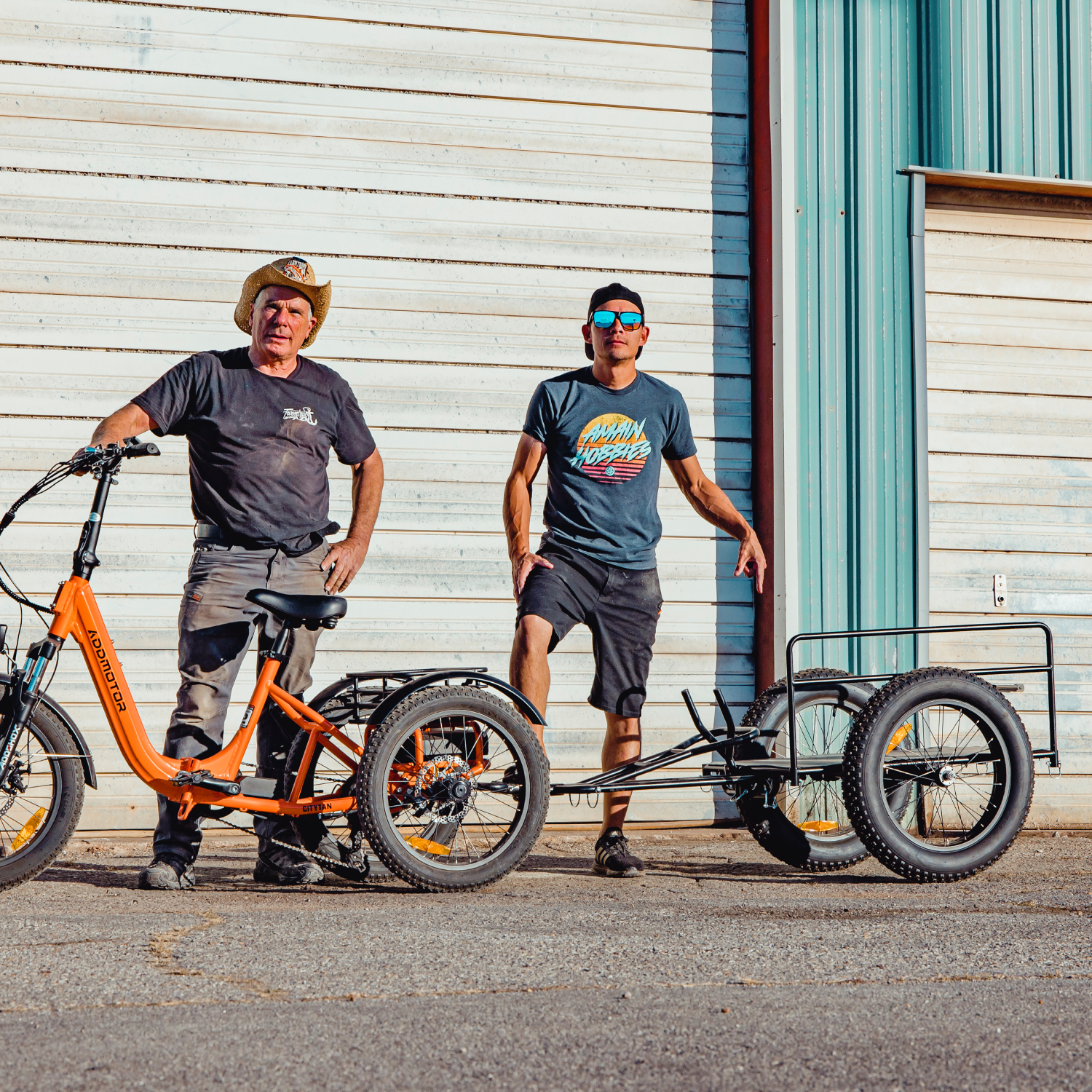Why is There a 20 MPH Speed Limit on Electric Bikes in USA?
By Addmotor | 28 October 2022 | 5 Comments
There are a lot of questions surrounding the 20 mph speed limit on electric bikes in USA. Why was it put into place, and what implications does it have for riders? In this blog post, we will explore the history of the law and discuss why it is such an important safety measure for electric bike riders.
Ride an Electric Bike Safely with Your Partner!
_1666937763.webp)
Why is There a 20 MPH Speed Limit on Electric Bikes in USA?
The 20mph speed limit on electric bikes in USA is a result of the Consumer Product Safety Act, which was passed in 2002. This act put into place a number of safety regulations for consumer products, including electric bikes. One of the act's main provisions was that electric bikes could not exceed 20mph on level ground.
Three-Class System to Describe Electric Bikes
In order to understand the 20mph speed limit, it is first important to understand how electric bikes are classified. In the US, there are three classes of electric bikes:
Class 1 e-bike: These bikes have a motor that provides assistance only when pedaling. The motor must cut off at 20mph.
Class 2 e-bike: These bikes have a throttle-operated motor that can be used without pedaling. The motor must cut off at 20mph.
Class 3 e-bike: These bikes have a motor that provides assistance only when pedaling, and the motor is allowed to go up to 28mph.
Why the CPSA Imposes a 20mph Speed Limit on Electric Bikes in USA
There are a number of reasons why the CPSA imposes a 20mph speed limit on electric bikes in USA.
1) Safety Measures:
The CPSA (Consumer Product Safety Act) states that electric bikes must not exceed 20 mph to be considered a consumer product. If electric bicycles were to go any faster, they would be considered motor vehicles and have to meet different safety standards. The CPSA imposes a 20mph speed limit on electric bikes in order to protect consumers from injury. Electric bikes that go faster than 20mph can pose a danger to riders, as they are more likely to lose control and crash. In addition, faster electric bikes are also more likely to overheat, which can lead to fires and injuries. By imposing a speed limit on electric bikes, the CPSA ensures that these products are safe for consumers.
2) Misuse of Electric Bikes:
In addition to safety concerns, the CPSA also imposes a 20mph speed limit on electric bikes in order to prevent misuse. Electric bikes that can go faster than 20mph are more likely to be used for illegal activities such as racing and joyriding. These activities can jeopardize public safety and cause property damage. In addition, the illegal use of electric bikes can also lead to noise pollution and disturb the peace. By imposing a speed limit on electric bikes, the CPSA is helping to prevent these activities from taking place.
3) To Encourage Pedaling:
The CPSA also imposes a 20mph speed limit on electric bikes in order to encourage riders to pedal. Electric bikes that can go faster than 20mph are more likely to be used as motorized vehicles rather than bicycles. This defeats the purpose of having an electric bike to assist a rider when pedaling. By imposing a speed limit on electric bikes, the CPSA is encouraging riders to pedal rather than relying on the motor to do all the work.
4) To Level the Playing Field:
The CPSA believes that imposing a 20mph speed limit on electric bikes will level the playing field between cyclists and motorists. In other words, both groups will be held to the same standard when it comes to speed. This is especially important given the fact that cyclists are much more vulnerable to serious injury in a collision than motorists. By capping the speed of electric bikes at 20mph, the CPSA hopes to reduce the number of cycling accidents and injuries.
5) To Set a Standard For Electric Bikes:
The CPSA speed limit of 20mph on electric bikes is also intended to set a standard for electric bikes in the US. Currently, there is no nationwide standard for electric bike speeds. This can lead to confusion and potentially dangerous situations on the roads. By setting a 20 mph speed limit for electric bikes, the CPSA is helping to create a clear and consistent standard for these vehicles. This will make it easier for cyclists, pedestrians, and motorists to share the roads safely and efficiently.
6) Reduces Emissions:
Electric vehicles are becoming increasingly popular as people look for ways to reduce their impact on the environment. One way that electric vehicles can reduce emissions is by traveling at lower speeds. Electric vehicles produce far fewer emissions when traveling at lower speeds than petrol vehicles. As a result, the 20mph speed limit on electric bikes helps to reduce emissions and improve air quality.
Some Safety Tips While Cycling on Electric Bikes:
Conclusion
While some companies are working on ways to make electric bikes go faster, the 20 mph speed limit is still in place in the US. There are a few reasons for this, including safety and regulation. What do you think about the 20 mph speed limit on electric bikes? Do you think it should be increased or decreased? Let us know your thoughts in the comments below.
You may also like:
Ride an Electric Bike Safely with Your Partner!
_1666937763.webp)
Why is There a 20 MPH Speed Limit on Electric Bikes in USA?
The 20mph speed limit on electric bikes in USA is a result of the Consumer Product Safety Act, which was passed in 2002. This act put into place a number of safety regulations for consumer products, including electric bikes. One of the act's main provisions was that electric bikes could not exceed 20mph on level ground.
Three-Class System to Describe Electric Bikes
In order to understand the 20mph speed limit, it is first important to understand how electric bikes are classified. In the US, there are three classes of electric bikes:
Class 1 e-bike: These bikes have a motor that provides assistance only when pedaling. The motor must cut off at 20mph.
Class 2 e-bike: These bikes have a throttle-operated motor that can be used without pedaling. The motor must cut off at 20mph.
Class 3 e-bike: These bikes have a motor that provides assistance only when pedaling, and the motor is allowed to go up to 28mph.
Why the CPSA Imposes a 20mph Speed Limit on Electric Bikes in USA
There are a number of reasons why the CPSA imposes a 20mph speed limit on electric bikes in USA.
1) Safety Measures:
The CPSA (Consumer Product Safety Act) states that electric bikes must not exceed 20 mph to be considered a consumer product. If electric bicycles were to go any faster, they would be considered motor vehicles and have to meet different safety standards. The CPSA imposes a 20mph speed limit on electric bikes in order to protect consumers from injury. Electric bikes that go faster than 20mph can pose a danger to riders, as they are more likely to lose control and crash. In addition, faster electric bikes are also more likely to overheat, which can lead to fires and injuries. By imposing a speed limit on electric bikes, the CPSA ensures that these products are safe for consumers.
2) Misuse of Electric Bikes:
In addition to safety concerns, the CPSA also imposes a 20mph speed limit on electric bikes in order to prevent misuse. Electric bikes that can go faster than 20mph are more likely to be used for illegal activities such as racing and joyriding. These activities can jeopardize public safety and cause property damage. In addition, the illegal use of electric bikes can also lead to noise pollution and disturb the peace. By imposing a speed limit on electric bikes, the CPSA is helping to prevent these activities from taking place.
3) To Encourage Pedaling:
The CPSA also imposes a 20mph speed limit on electric bikes in order to encourage riders to pedal. Electric bikes that can go faster than 20mph are more likely to be used as motorized vehicles rather than bicycles. This defeats the purpose of having an electric bike to assist a rider when pedaling. By imposing a speed limit on electric bikes, the CPSA is encouraging riders to pedal rather than relying on the motor to do all the work.
4) To Level the Playing Field:
The CPSA believes that imposing a 20mph speed limit on electric bikes will level the playing field between cyclists and motorists. In other words, both groups will be held to the same standard when it comes to speed. This is especially important given the fact that cyclists are much more vulnerable to serious injury in a collision than motorists. By capping the speed of electric bikes at 20mph, the CPSA hopes to reduce the number of cycling accidents and injuries.
5) To Set a Standard For Electric Bikes:
The CPSA speed limit of 20mph on electric bikes is also intended to set a standard for electric bikes in the US. Currently, there is no nationwide standard for electric bike speeds. This can lead to confusion and potentially dangerous situations on the roads. By setting a 20 mph speed limit for electric bikes, the CPSA is helping to create a clear and consistent standard for these vehicles. This will make it easier for cyclists, pedestrians, and motorists to share the roads safely and efficiently.
6) Reduces Emissions:
Electric vehicles are becoming increasingly popular as people look for ways to reduce their impact on the environment. One way that electric vehicles can reduce emissions is by traveling at lower speeds. Electric vehicles produce far fewer emissions when traveling at lower speeds than petrol vehicles. As a result, the 20mph speed limit on electric bikes helps to reduce emissions and improve air quality.
Some Safety Tips While Cycling on Electric Bikes:
- Always wear a helmet while riding an electric bike.
- Obey the speed limit and ride at a safe speed.
- Be aware of your surroundings and watch for obstacles.
- Use lights and reflectors when riding at night or in low-light conditions.
- Do not ride under the influence of alcohol or drugs.
- Do not ride recklessly or in a manner that endangers others.
- Always follow the rules of the road.
- Yield to pedestrians and give them plenty of space.
- Be cautious when passing other cyclists, pedestrians, and vehicles.
- Do not ride on sidewalks or in other areas where cycling is prohibited.
Following these safety tips can help prevent accidents and injuries while riding your electric bike.Conclusion
While some companies are working on ways to make electric bikes go faster, the 20 mph speed limit is still in place in the US. There are a few reasons for this, including safety and regulation. What do you think about the 20 mph speed limit on electric bikes? Do you think it should be increased or decreased? Let us know your thoughts in the comments below.
You may also like:
California Electric Bike Regulations and FQAs
Florida Electric Bike Regulations and FQAs
Recently Reviews
Read MoreLeave a Reply
Your email address will not be published.Required fields are marked. *
Latest Stories




